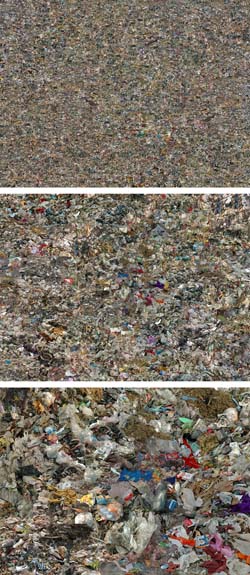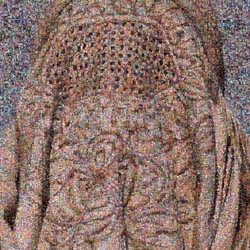

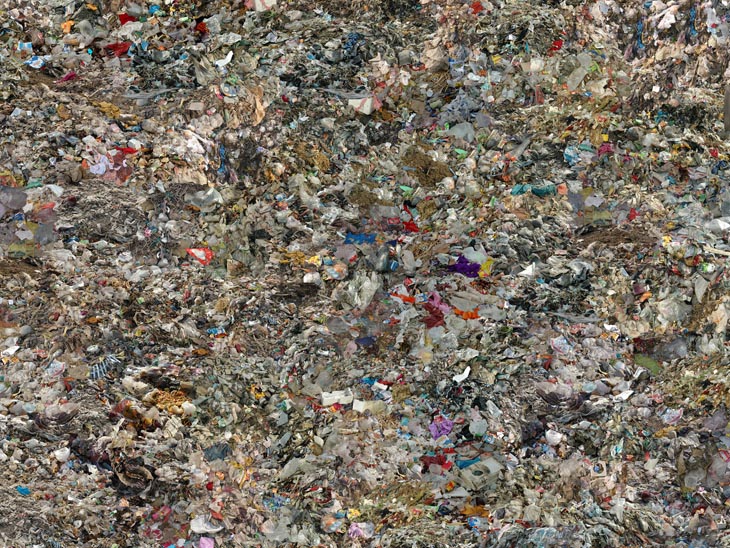
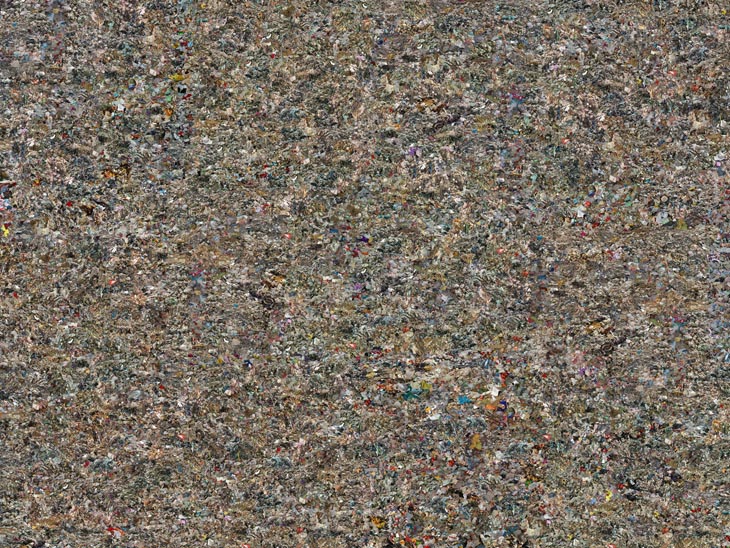
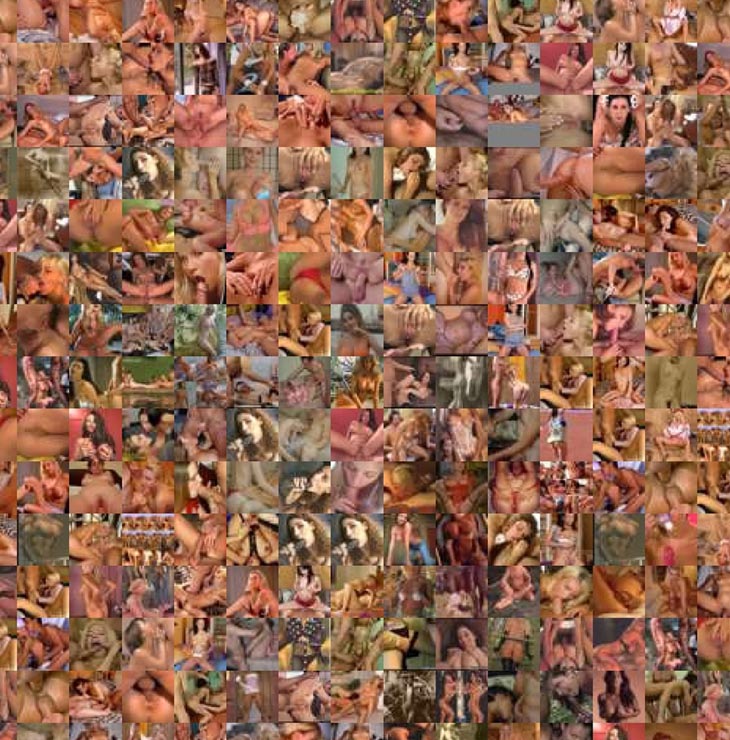
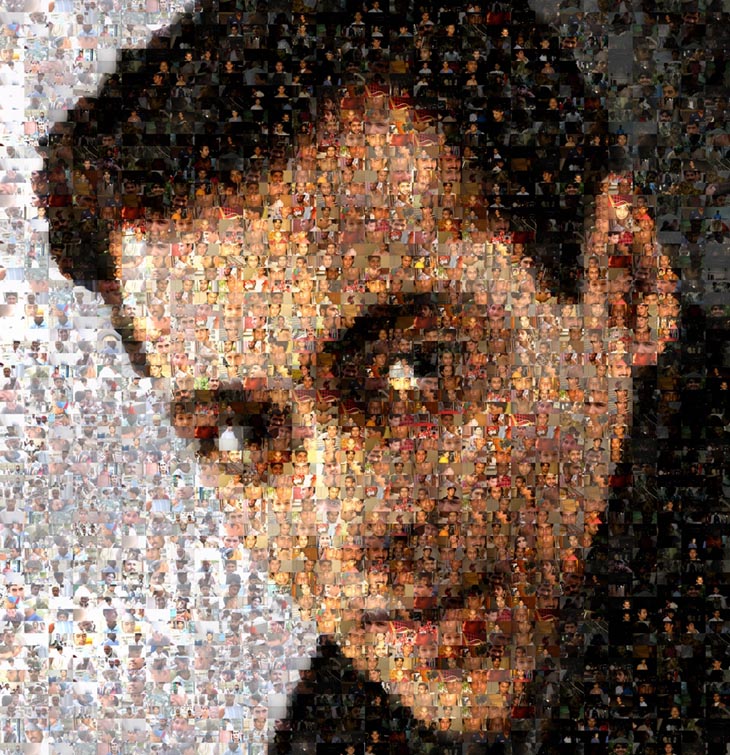
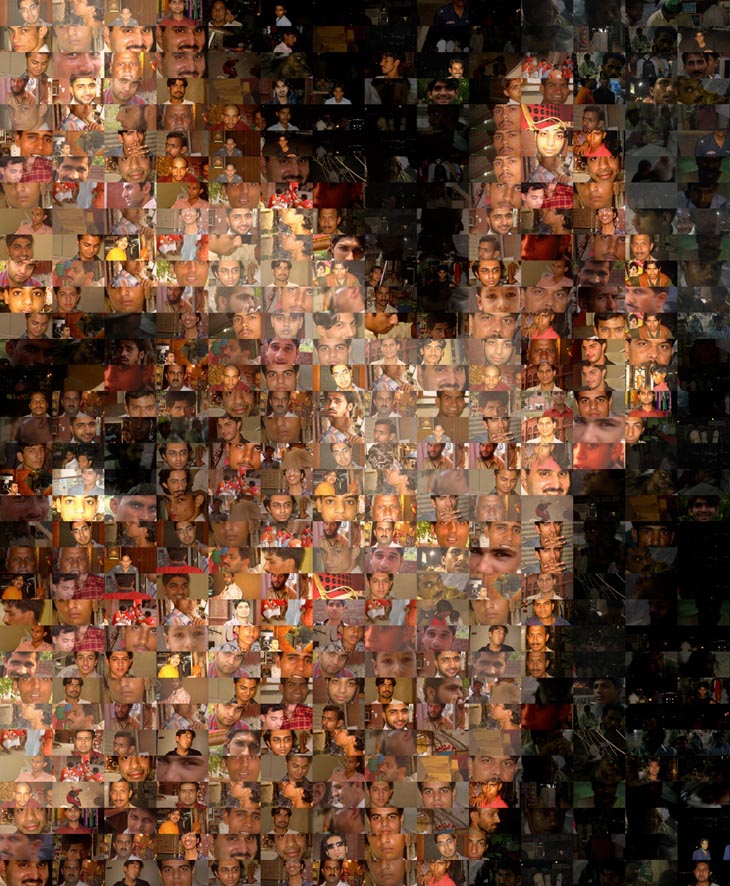
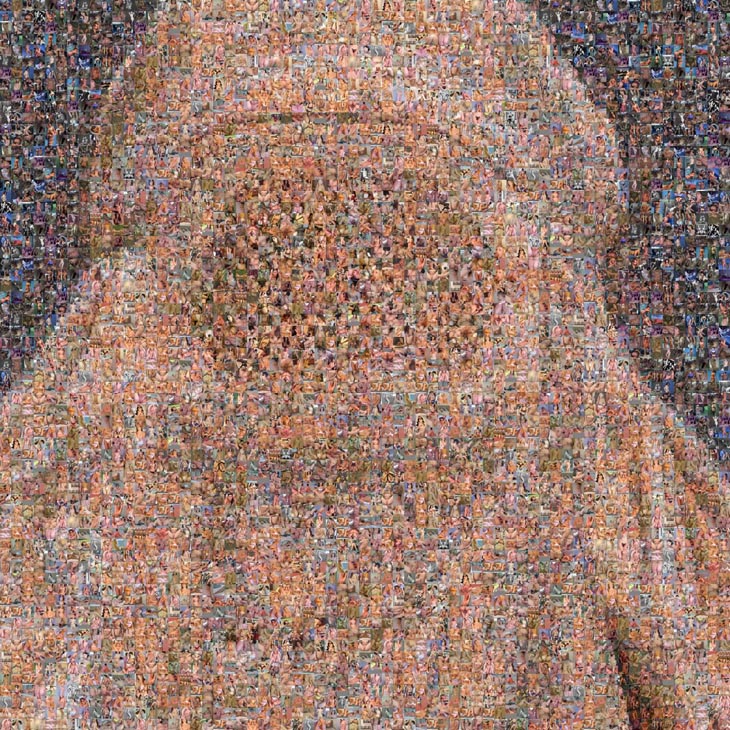
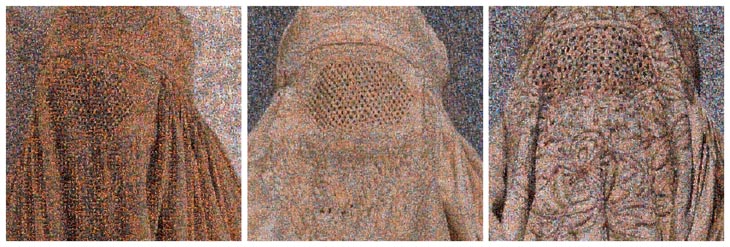
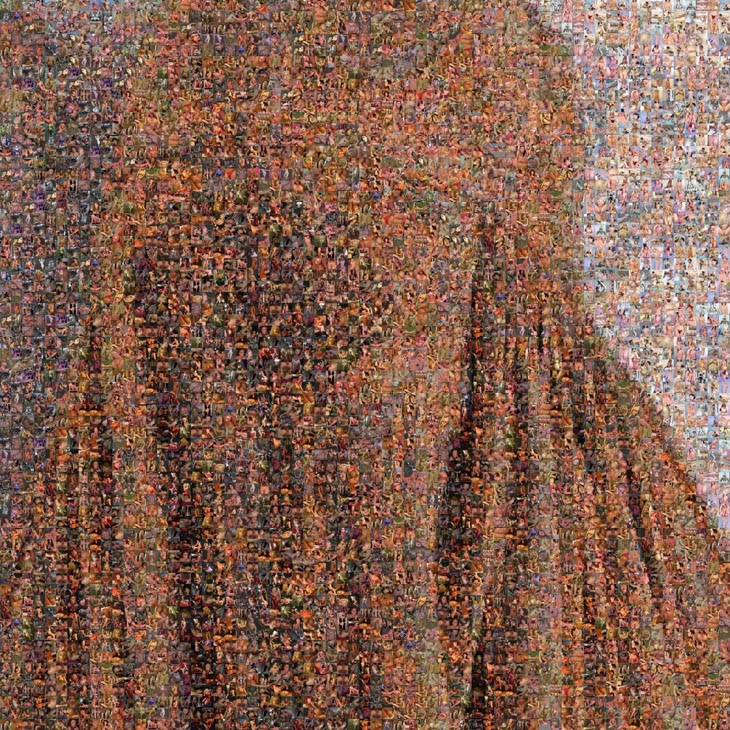

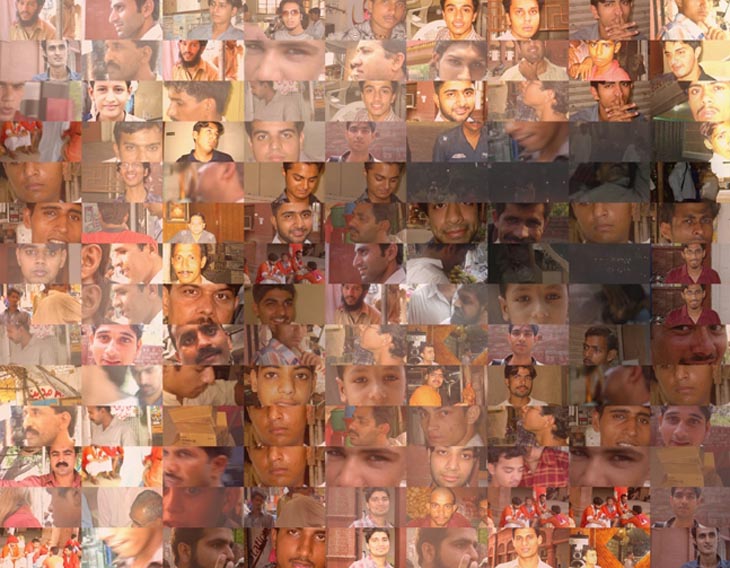

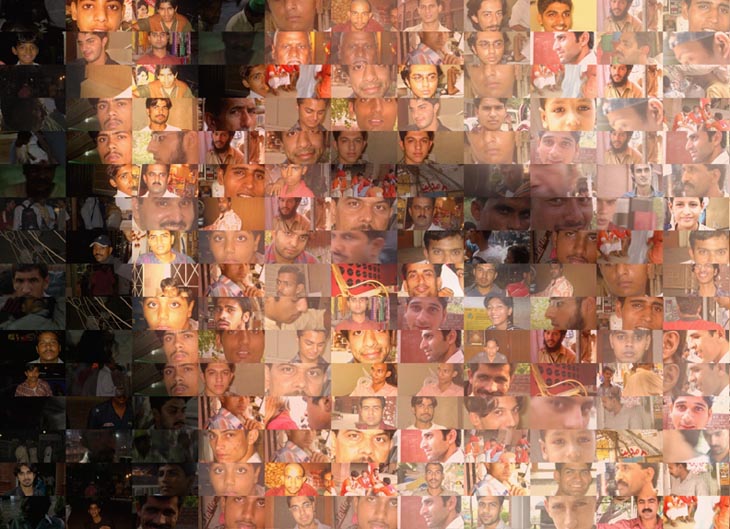
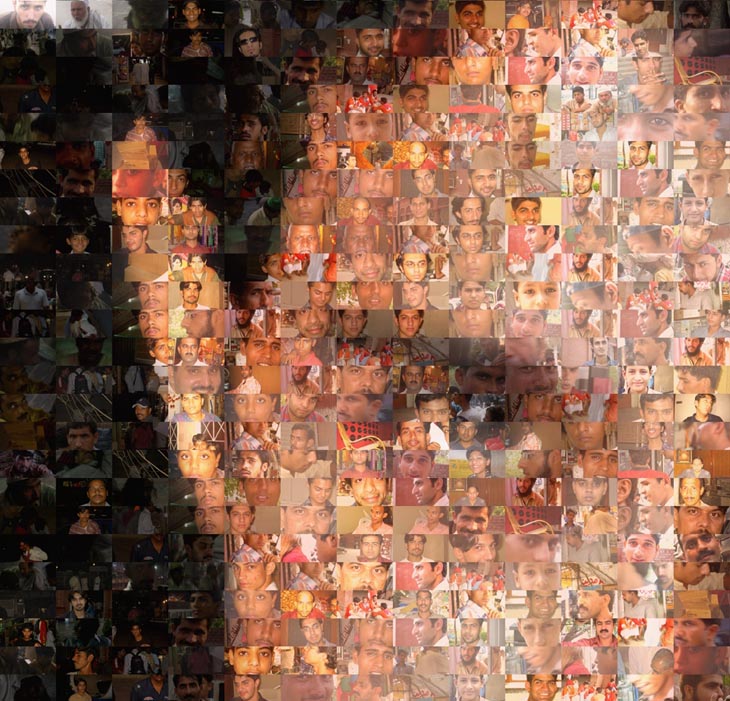
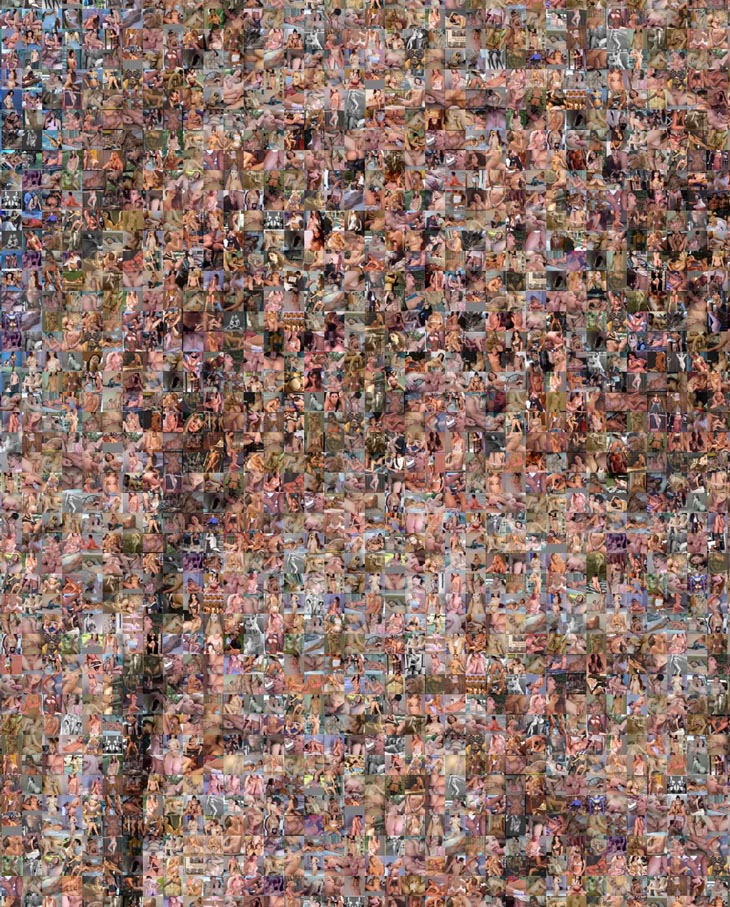
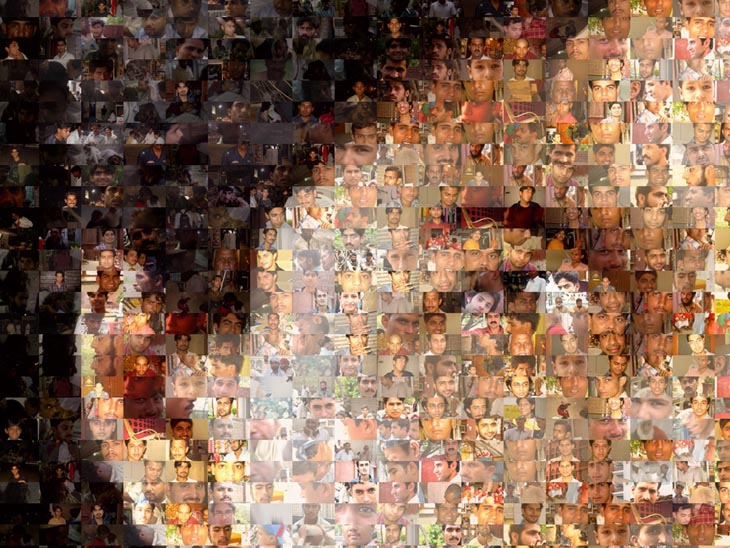
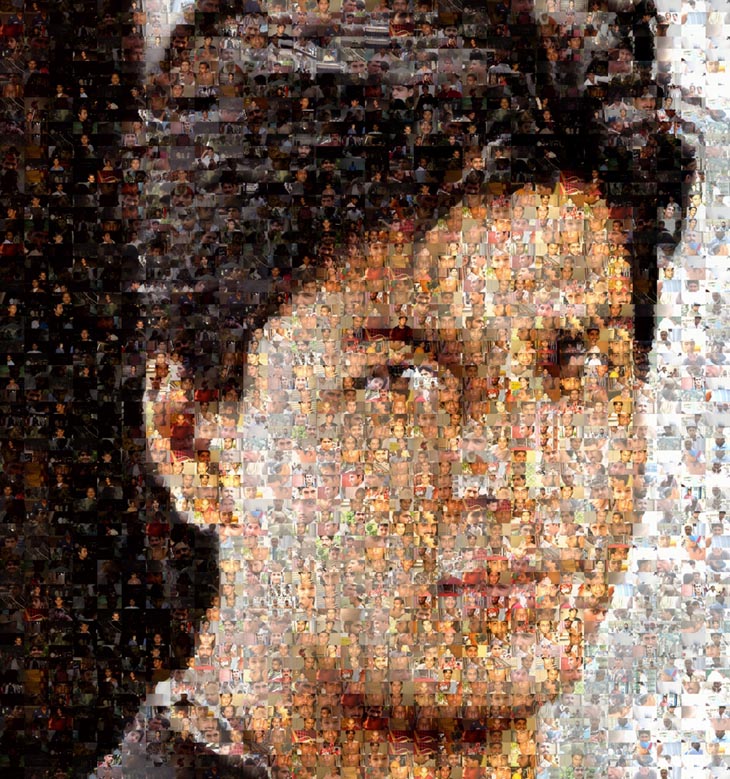
ARTIST:
Rashid Rana
In The World is Not Enough Rashid Rana creates an impossible image of immense beauty from his personal accumulation of photographs of social waste, taken mostly from a landfill site outside Lahore, the cosmopolitan city of Pakistan where he lives, as well as from the city itself. Reduced to miniature pixels of information, the details that form the much larger image, of what appears to be the undulating sea, are in fact hundreds of images of trash digitally ‘stitched’ into a non-existent aerial view that bear an uncanny resemblance to the large canvases of non-representational art from the post-war era. A sense of the scale and singularity of man’s ambition is indicated, not through great feats of industry or the miracle of science, but through one of the residual by-products of our age. Here, as elsewhere in the artist’s work, the juxtaposition of beauty and the macabre forces the viewer into an acknowledgement of the politics of the piece. A work that appears on one level to represent a notion of ideal beauty is in fact based on a more troubling examination of the increasing detritus and decay of the city.
Rashid Rana critiques culturally constructed, negative stereotypes of women through his work, whether in relation to the sexual objectification of women through the pornography industry or in relation to how the burqa is worn and perceived as a political symbol in a post 9-11 era. In Veil I, Veil II & III, Rana depicts an anonymous figure dressed in a burqa. Upon further inspection, the work is actually a fragmented collage made-up of thousands of small, unfocused pornographic stills of women. By using both these representations of gender in a rigid manner, Rana is effectively destroying them both, forcing the viewer to look beyond them and critique the so-called machinery of truth from which they are born.
Rashid Rana’s work takes its title from the units that form an insect’s eye, the ommatidia, which individually provide picture elements for the brain to compose an image from. Rana uses digital images to similar effect in his Ommatidia series, where he takes some of the leading actors of contemporary Bollywood cinema, Hrithik Roshan, Salman Khan and Shahrukh Khan, and re-constructs their portraits from smaller individual elements. These renowned figures from contemporary cinema are the stable diet for millions of people in India, Pakistan and throughout the Indian subcontinent who almost religiously frequent the cinema and absorb the choreographed dance routines and songs that are the signature of every musical. Rana draws together hundreds of smaller crudely cut portraits of young Pakistani men; workers, attendants, shopkeepers, who appear haphazardly photographed by the artist, in order to compose a kaleidoscopic portrait of each of these actors.
The minute faces look in adulation at their idols. Rana suggests that these cinematic heroes are the invention of the viewing public, who invest their own imaginations and desires in the hyper-reality that make up the lives of these Indian superstars. The Ommatidia Series ultimately subverts and re-appropriates the concept of desire and fantasy world created in Indian film, while pointing out the complexity of attempting to fabricate a cultural narrative.
The minute faces look in adulation at their idols. Rana suggests that these cinematic heroes are the invention of the viewing public, who invest their own imaginations and desires in the hyper-reality that make up the lives of these Indian superstars. The Ommatidia Series ultimately subverts and re-appropriates the concept of desire and fantasy world created in Indian film, while pointing out the complexity of attempting to fabricate a cultural narrative.

